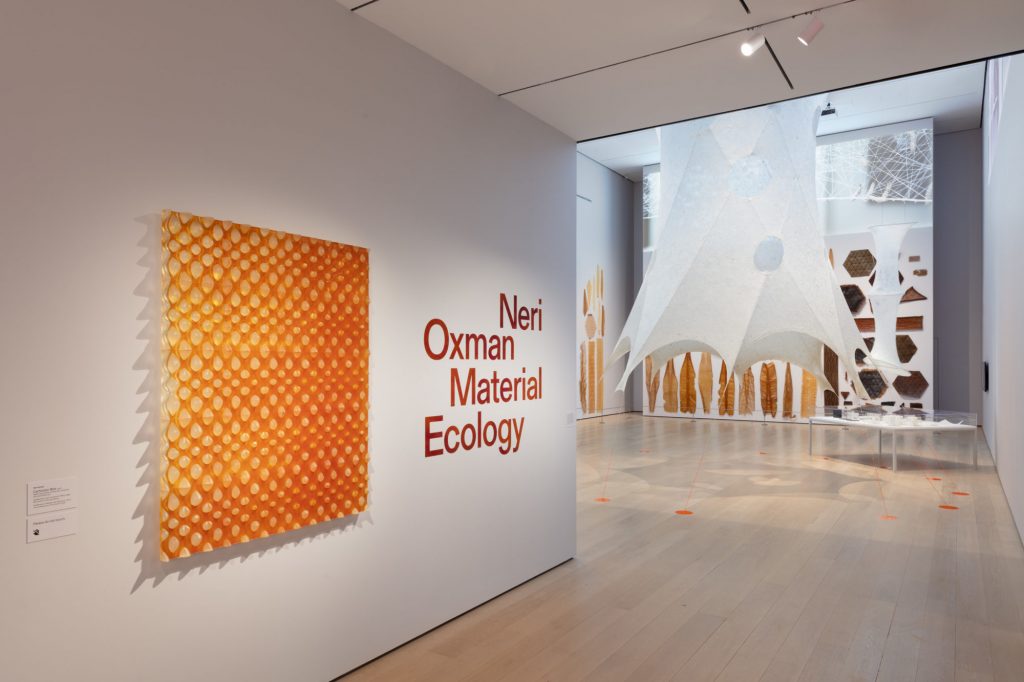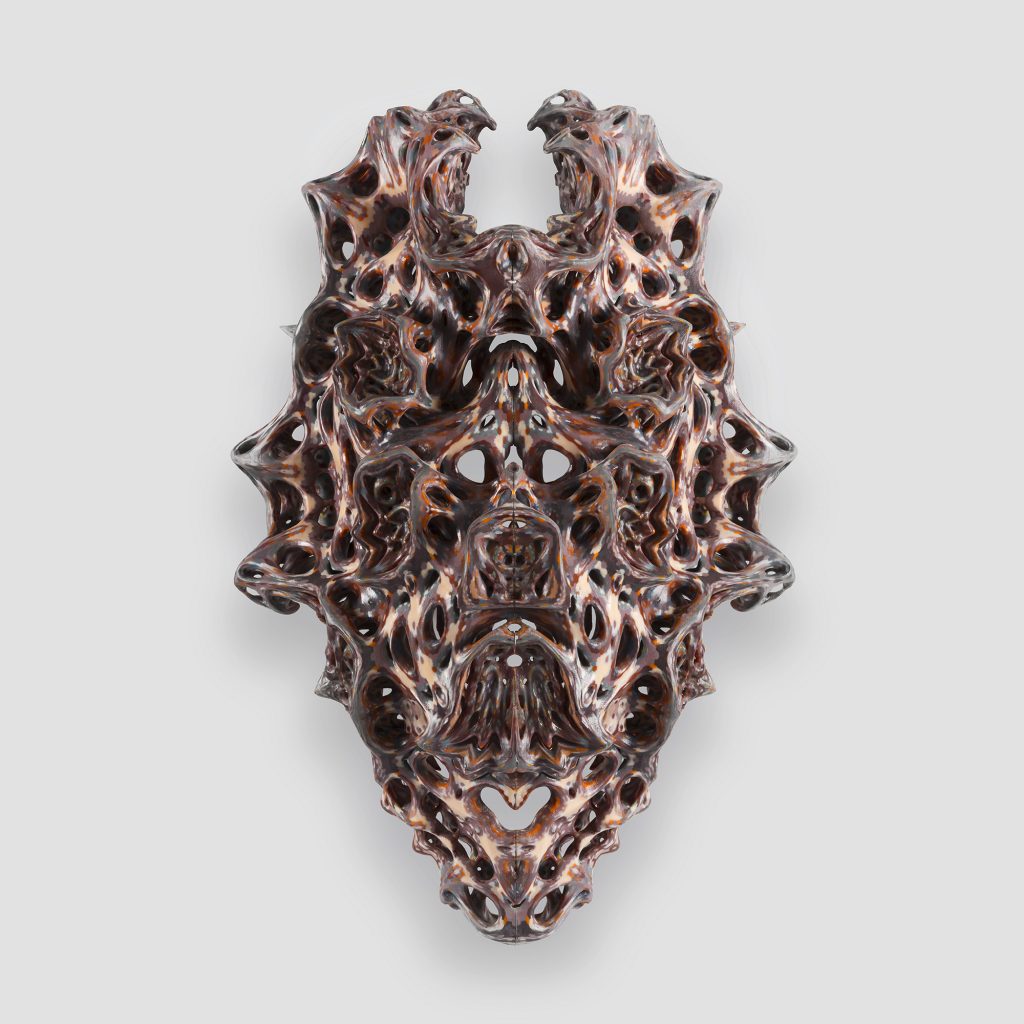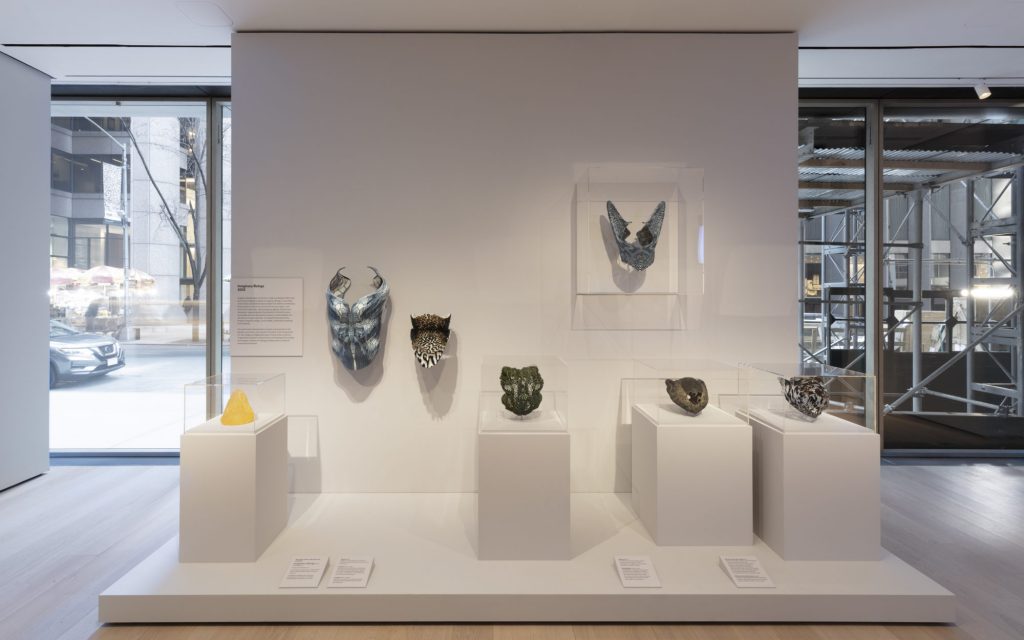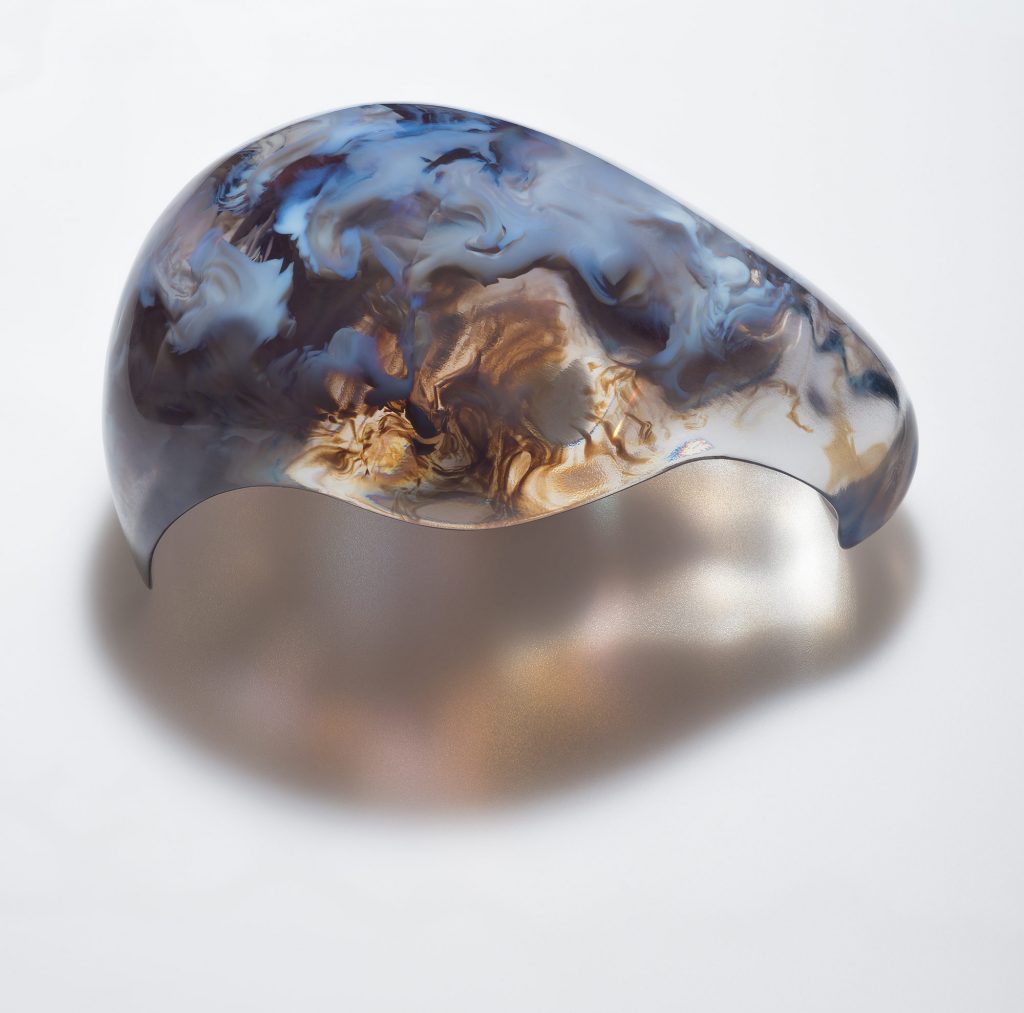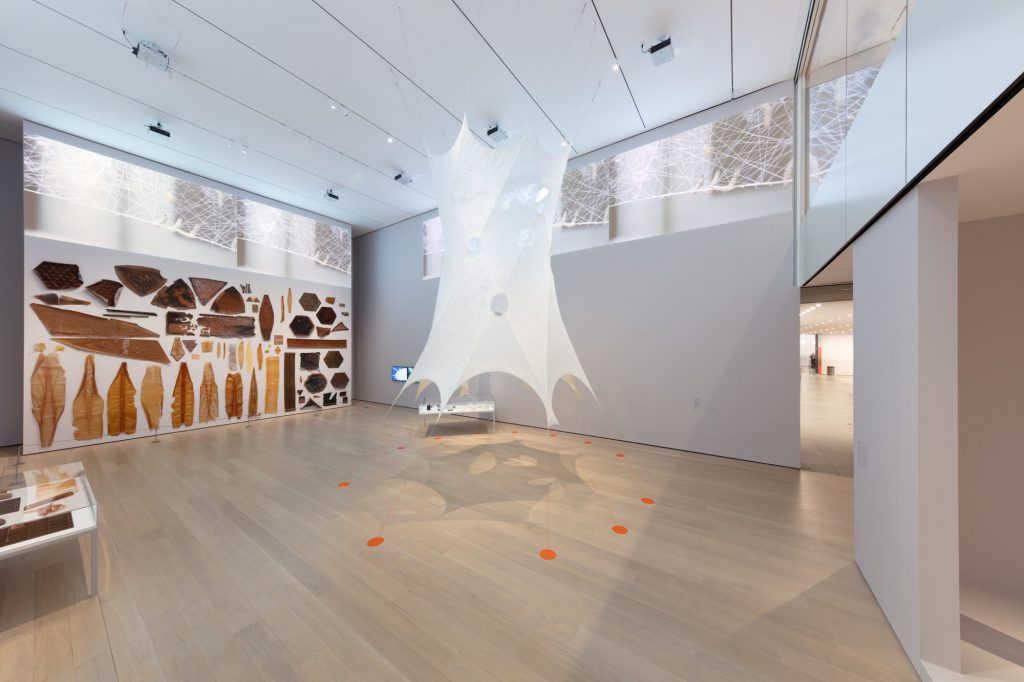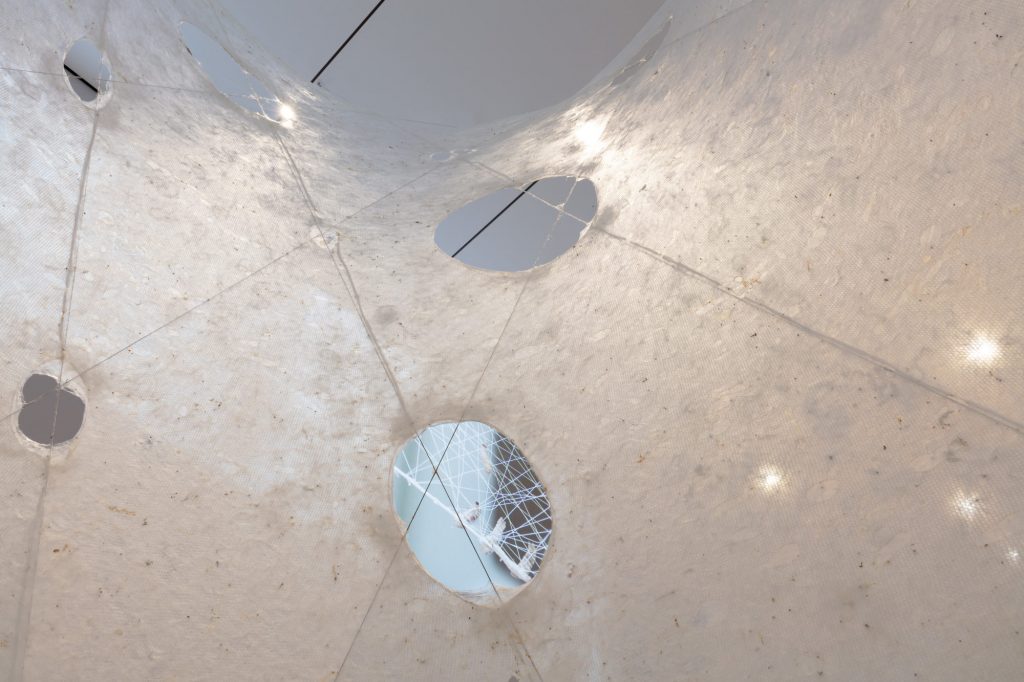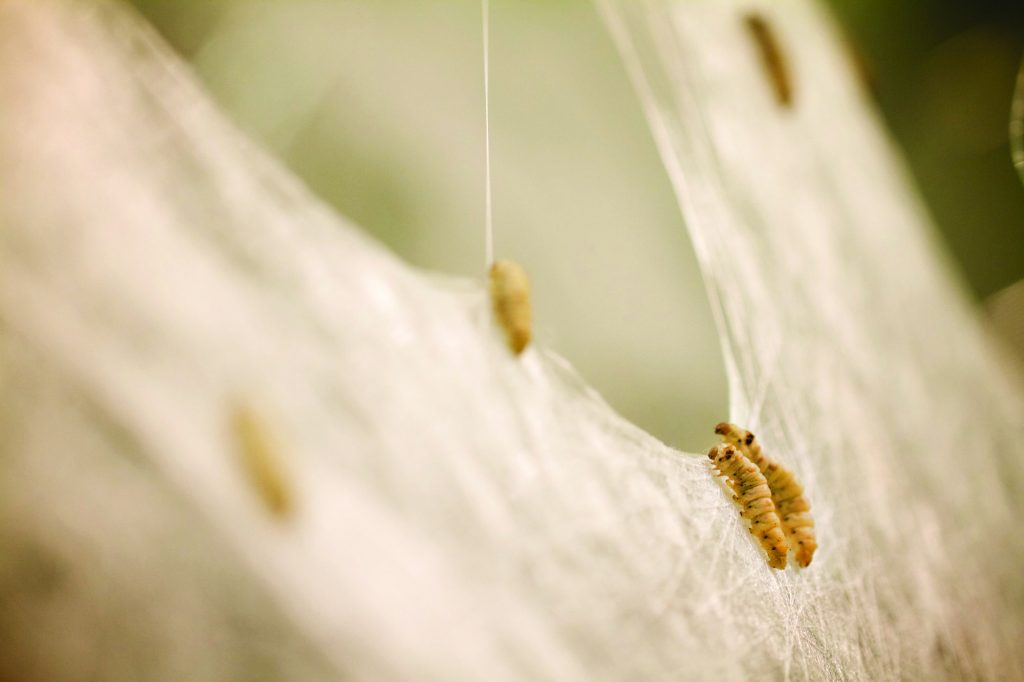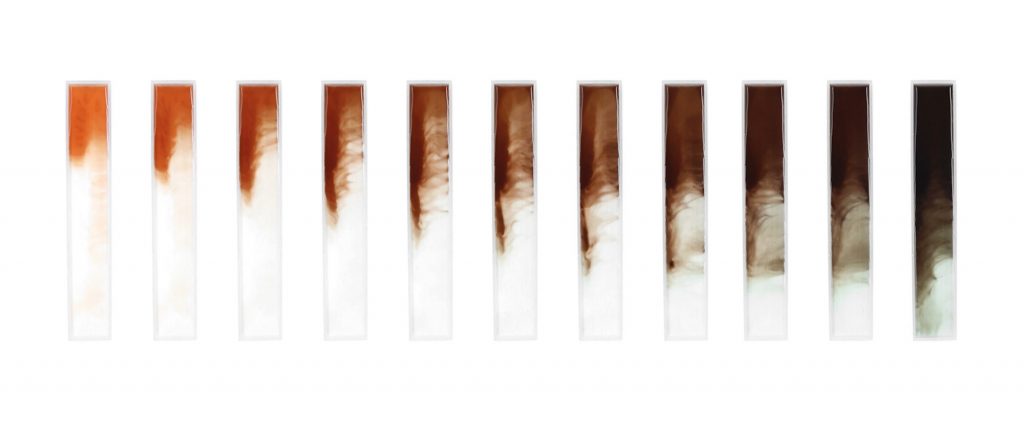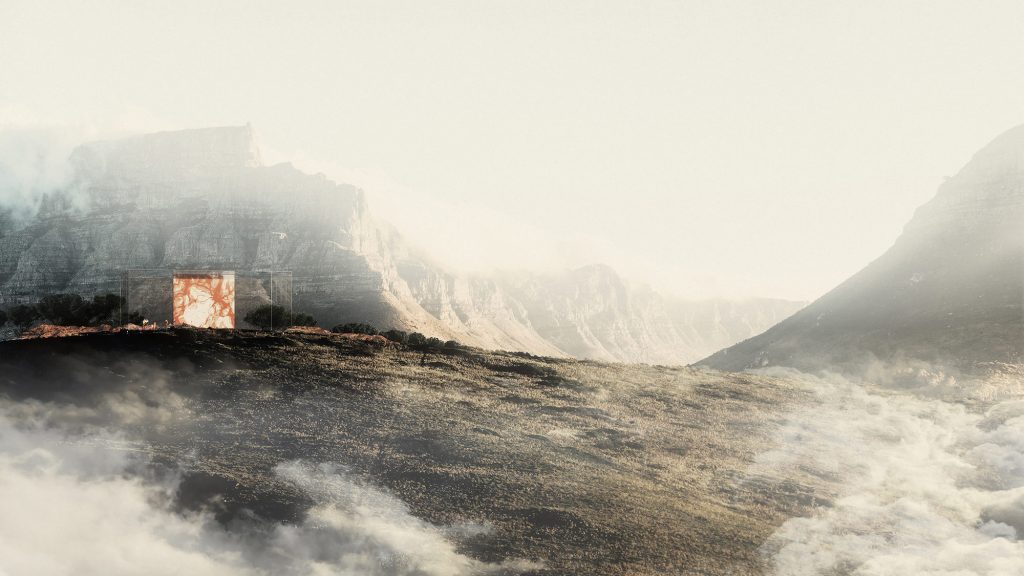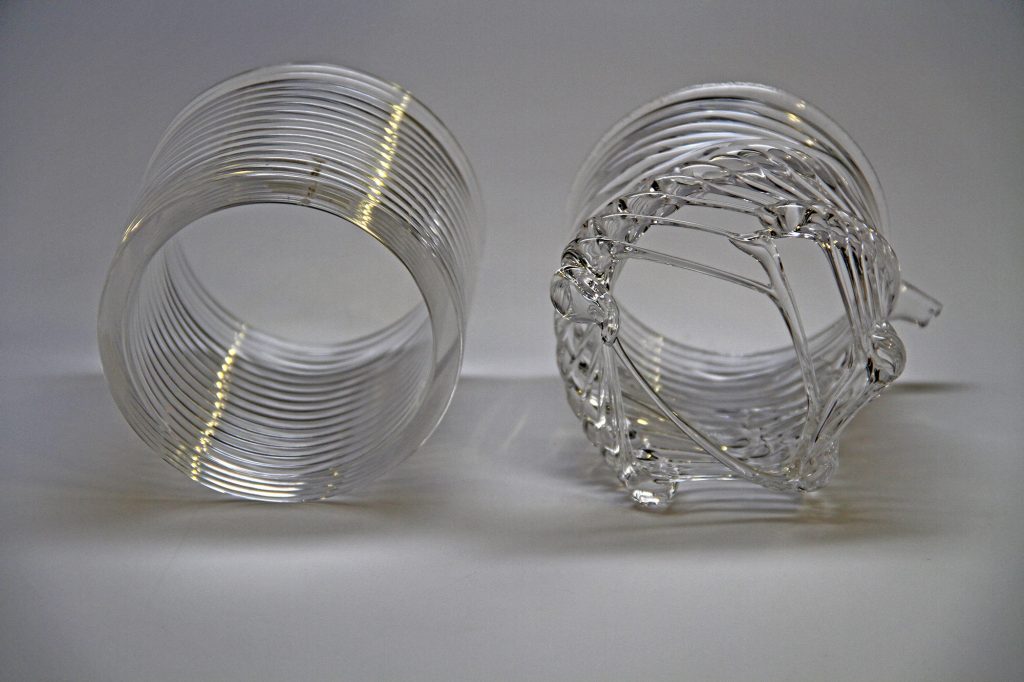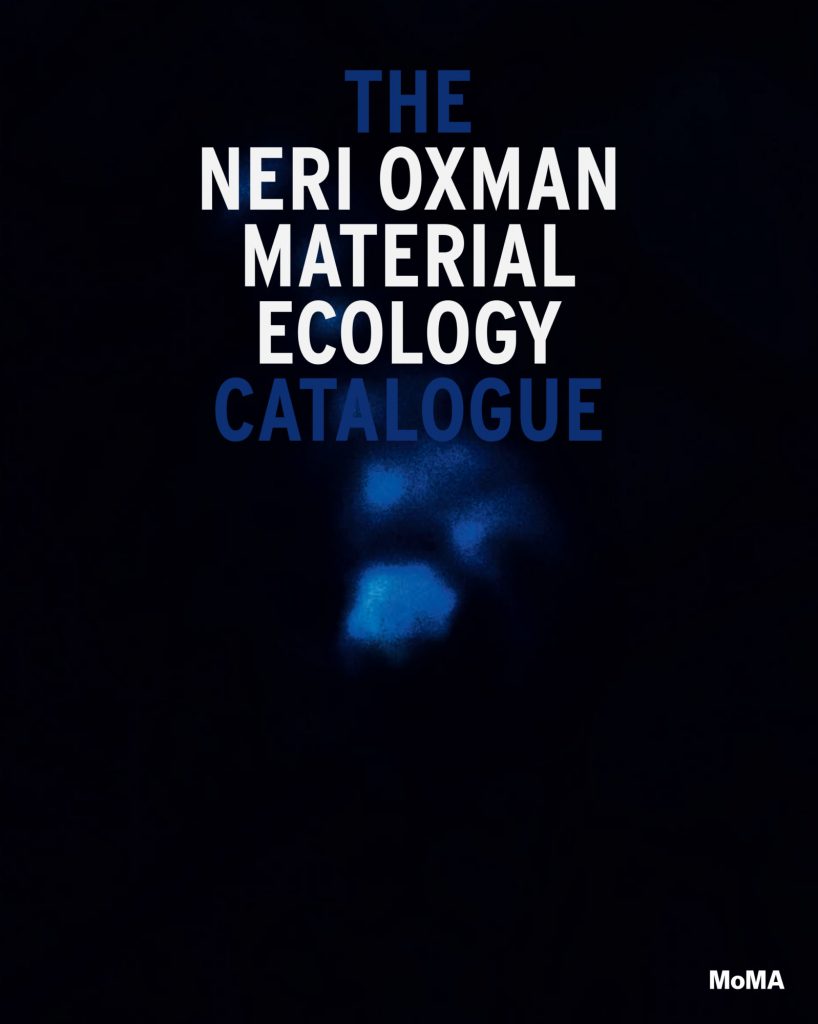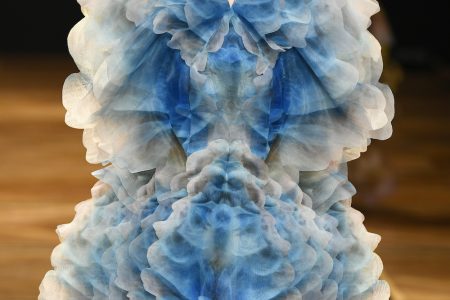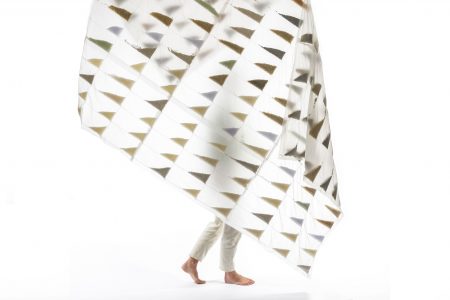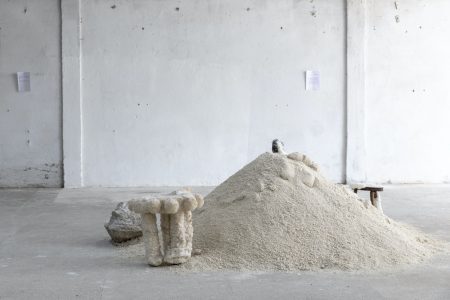Neri Oxman’s “Material Ecology”
Now available through MoMa’s ‘Virtual Views’ programme, Neri Oxman’s latest exhibition not only takes a critical look at the future of architecture and design, but also aims to re-define the role of the designer as the initiator of a process, rather than the decisive form-giver of an object.
Although “Neri Oxman: Material Ecology” opened in New York City’s MoMA in February earlier this year, the exhibition has barely had a chance to be viewed by the public in person (MoMa’s museums and design stores have been closed since March 12th as a result of COVID-19). In an effort to still engage with people beyond the museum’s physical space, the exhibition has now become a part of the large institution’s ‘Virtual Views’ programme — which gives exclusive access to interviews, the exhibition’s catalogue, audio guides and images.
Over the years, Neri Oxman and her research group Mediated Matter have become a force to be reckoned with in the architecture and design scene. An architect by training, Oxman started medical school before following her parents’ footsteps (who are also architected), attending both Tel Aviv’s Technion and London’s Architectural Association. As the founding director of The Mediated Matter Group at the MIT Media Lab, Oxman coined the term “material ecology” to describe an emerging field in which humans, automated processes, and nature unite to produce objects and structures that are designed through growth, with no assembly required. Her process integrates advanced 3D-printing techniques with in-depth research of natural phenomena, material ecology incorporates biology, engineering, materials science, and computer science.
The exhibition “Neri Oxman: Material Ecology” is a testament to over two decades worth of work and the collaboration between Neri and the show’s curator, Paola Antonelli [who we also spoke to earlier this year], but is a decidedly small and focused show that is organised around seven of Oxman’s most instrumental projects. Moving beyond the static design exhibitions that most museum’s present, MoMa’s exhibition is grounded in seeing the designer and their work not as a static element, but one that is always changing and in-process — and no work exemplifies this strategy more than “Silk Pavilion”, in which we see silkworms creating a cocoon around a man-made structure. By presenting the works alongside artefacts, prototypes and videos that show the methodology behind their creation, these methods are not kept private – but shared with anyone who wants to learn more. In doing so, each work acts as a “demo” for a library of materials and processes that might someday be available to all architects and designers.
Starting from the point of speculative design, the branch of design that deals with imagining possible futures through design at all scales, Oxman’s projects go being merely imagination and work towards her methodology’s potential implications — offering visions of futures in which objects are in symbiosis with natural materials as well as their digitally engineered reality. Whether they’re created by silkworms or infused with melanin or bacteria, Oxman’s aesthetic works aim to open us up to living in buildings that are capable of responding to variations in light and temperature, or even rejecting the idea that everything must last forever and instead be alright with the fact that things age and decay organically, and that these can be created to return to nature (and not harm it) once they have served their purpose. As Antonelli points out in the exhibition’s catalogue: “Her [Neri Oxman’s] practice is a powerful anticipation of a better possible future, and it is projected toward that future without apparent anxiety, patiently weaving connections between disciplines and between species, slowing down the pace of making by marrying the latest technologies with the most ancient and deliberate of tempos—those of silkworms, bees, and microbes. She engages change using change’s own momentum”.
Even though it feels strange to be accessing Oxman’s projects through a virtual portal, and MoMa’s ‘Virtual Views’ may still need some work if it really wants to embody what viewers go through when visiting a museum — it still manages to give online viewers access to insights that they may not have been able to have when visiting the exhibition in person (as long as they put in the work, that is). One thing, in particular, that was great to experience was being able to witness and hear about the relationship between the exhibition’s curator, Antonelli, and Oxman — who first met back in 2006 when Oxman was still an architecture student. In nearly every facet of the online exhibition, we see the two interacting with one another, and letting us viewers into their understandings of one another and their practices.
“Neri Oxman: Material Ecology” opened at MoMA in New York on February 22nd 2020 and ran until MOMA’s temporary closure. Viewers can now see the exhibition as part of MoMa’s ‘Virtual Views’ here.
Cover Photo: “The Aguahoja Artifacts Display: A catalogue of material experiments spanning four years of research shows the range of aesthetics and behaviours we have been able to elicit in medium-to-large-scale prints via performative geometric toolpaths, generative design, bio-composite distributions, and variable fabrication parameters”. // Image Credits: Neri Oxman and The Mediated Matter Group. Aguahoja I. 2018. Photo: The Mediated Matter Group. Courtesy The Mediated Matter Group
